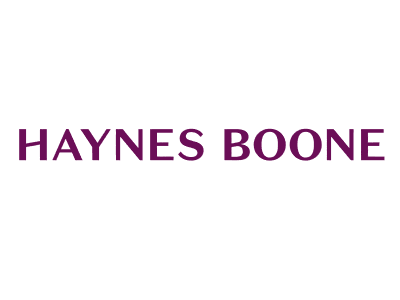On February 16, 2024, the Federal Circuit reminded the bar that arguments cannot be incorporated by reference except in narrow circumstances. In a precedential order, the court chastised counsel whose brief had incorporated by reference an argument from a companion case. The court’s order likely signals a return to ordinary procedures after regularly permitting some arguments to be raised merely by referencing other parties’ briefs.
Appellate briefing rules at the Federal Circuit
Federal Rule of Appellate Procedure 28(i) allows incorporation by reference in the same or a consolidated case:
In a case involving more than one appellant or appellee, including consolidated cases, any number of appellants or appellees may join in a brief, and any party may adopt by reference a part of another’s brief….[1]
No current rule, however, expressly forbids the incorporation of arguments from another brief. Tangentially, Federal Circuit Rule 28(j) prohibits “entirely duplicative briefs,” but it allows for some duplication and simply requires parties to “advise the court” of “the duplicative content.”[2]
Incorporation by reference of Arthrex arguments
Over the last several years, the Federal Circuit accepted numerous briefs that challenged the constitutionality of PTAB judicial appointments by incorporating arguments raised by Arthrex in Arthrex, Inc. v. Smith & Nephew, Inc. (No. 18-2140) or Polaris in Polaris Innovations Ltd. v. Kingston Technologies (No. 18-1768).[3] The court accepted these incorporated arguments as fully raised. After the Supreme Court opened the door to the “Director Review” process, the Federal Circuit remanded cases where the patent owner preserved the issue only by incorporating arguments by reference.[4]
In hindsight, the Federal Circuit likely allowed the incorporation of short Arthrex-type arguments because they created little if any additional burden on the court. The Arthrex issue was identical in every case and was not tied to the specific facts. While it was an issue that had to be included in an opening brief to avoid forfeiture,[5] its resolution was essentially out of the Federal Circuit’s hands once the Supreme Court granted certiorari in October 2020.[6]
The beginning of the end
However, last year, the court signaled an end to this flexibility in Medtronic, Inc. v. Teleflex Life Sciences Ltd.[7] The court held that Medtronic waived an argument by incorporating it from its own brief in a related (but not consolidated) case. The court cited to Microsoft Corp. v. DataTern, Inc.,[8] which stated that “incorporation of co-party briefing is only allowed in consolidated cases as explained in Fed. R. App. P. 28(i).”[9] The Medtronic opinion added that “incorporation… is a violation of Fed. R. App. P. 28(a)(6),”[10] which requires a brief to contain a “statement of the case.”[11] The briefs in Microsoft and Medtronic also exceeded the word limit once the incorporated arguments were counted, which the court said was “fundamentally unfair.”[12]
Promptu’s appeal brief
Unaware of the Microsoft precedent[13]—and before the Medtronic decision—Comcast filed a brief that incorporated by reference its argument made in a companion case. The issue was whether a prior art reference cited in both cases qualified as prior art. The argument was identical and was incorporated “to avoid duplication.”[14] But counting the words of the incorporated argument made the brief exceed the word limit of Fed. Cir. R. 32.
Federal Circuit sua sponte order
The Federal Circuit took a hardnosed response. In a sua sponte precedential order—call it a klaxon warning to the bar—it generally prohibited incorporation by reference:
[F]uture litigants should appreciate that: (1) it is improper to incorporate material from one brief by reference into another unless in compliance with Fed. R. App. P. 28; (2) in no event is such incorporation permitted if it would result in exceeding the applicable word count; and (3) violating these provisions in the future will likely result in sanctions.[15]
The order dispels any latent ambiguity about incorporation by reference: outside the narrow exception of Fed. R. App. P. 28(i), incorporated arguments are prohibited, and, where allowed, cannot cause a brief to exceed the word limit.
Hopefully, the next update to the Federal Circuit’s rules will include the Promptu order’s guidance. Until then, the precedential order in Promptu is the bar’s notice not to incorporate arguments by reference except in very narrow circumstances.
[1] Federal Rule of Appellate Procedure 28(i).
[2] Federal Circuit Rule 28(j).
[3] See, e.g., Brief for Appellant at 37, Uniloc 2017 LLC, v. Facebook, Inc., No. 18-2251 (Fed. Cir. Oct. 31, 2019) (“Patent Owner hereby adopts this constitutional challenge for purposes of preserving the issue pending the appeal.”); Brief for Appellant at 66, Bedgear, LLC v. Fredman Bros. Furniture Co., Inc., 783 F.App’x 1029 (No. 18-2082).
[4] See, e.g., Uniloc 2017 LLC v. Cisco Systems, Inc., (No. 18-2431) (Fed. Cir. May 5, 2023); VirnetX Inc. v. Cisco System, Inc., 2020 WL 2511116 (Fed. Cir. 2020); Uniloc 2017 LLC v. Unified Patents, 2021 WL 2071104 (Fed. Cir. 2021).
[5] See Customedia Techs., LLC v. Dish Network Corp., 941 F.3d 1173, 1174 (Fed. Cir. 2019).
[6] See United States v. Arthrex, Inc., 141 S. Ct. 549, 208 L. Ed. 2d 173 (2020).
[7] 86 F.4th 902 (Fed. Cir. 2023).
[8] 755 F.3d 899 (Fed. Cir. 2014).
[9] 755 F.3d at 910.
[10] 86 F.4th 902 (Fed. Cir. 2023) (quoting Monsanto Co. v. Scruggs, 459 F.3d 1328, 1335 (Fed. Cir. 2006)).
[11] While Fed. R. App. P. 28 has been amended several times over the years, subpart (a)(6) appears to have always referred to the “statement of the case.” It seems that the court could also point to current subpart (a)(8), which requires a brief to contain “the argument” including “appellant’s contentions and the reasons for them.”
[12] 755 F.3d at 910.
[13] “We accept as true Counsel’s claim that he was not aware of the Microsoft decision until the Reply Brief referenced it.” Promptu Sys. Corp. v. Comcast Cable Commn’cs, LLC, No. 22-1093, slip op. at 3 (Fed. Cir. Feb. 16, 2024).
[14] Brief for Appellee at 8 (n. 1), Promptu Sys. Corp. v. Comcast Cable Commn’cs, LLC, No. 22-1093 (Fed. Cir. Feb. 16, 2024).
[15] Promptu Sys. Corp. v. Comcast Cable Commn’cs, LLC, No. 22-1093, slip op. at 3-4 (Fed. Cir. Feb. 16, 2024).

Written by Theo Foster
Partner, Haynes and Boone, LLP

Written by Adam Erickson
Associate, Haynes and Boone, LLP
You may also like…
Welcome to Hangzhou! The AIPPI World Congress 2024
AIPPI World Congress 2024 opened its doors in Hangzhou, China, on Saturday, 19 October. All attending were warmly...
Crystalizing plant variety infringement protection in India
On September 20, 2024, the Delhi High Court ruled in Pioneer Overseas Corporation v. M/s Evercrop Agro Science &...
German criminal court finds three defendants guilty of fraud for sending misleading invoices to EUIPO customers
In September 2024, the Munich Court (Germany) found three defendants guilty of commercial gang fraud for sending...
Contact us to write for out Newsletter














